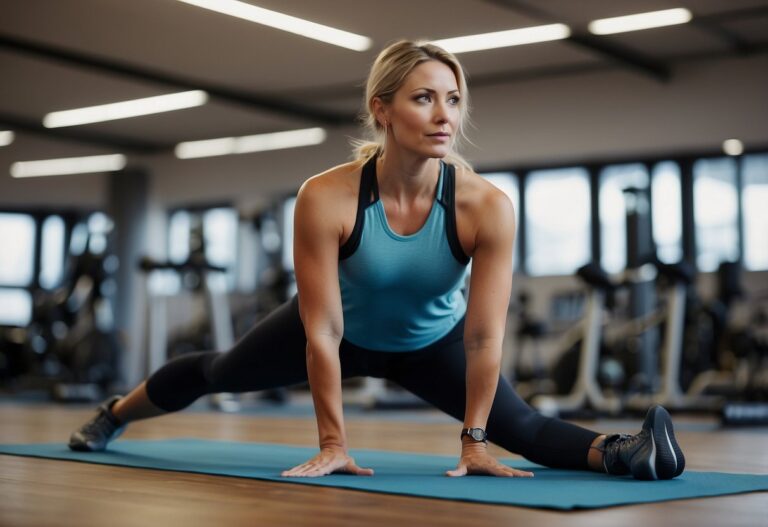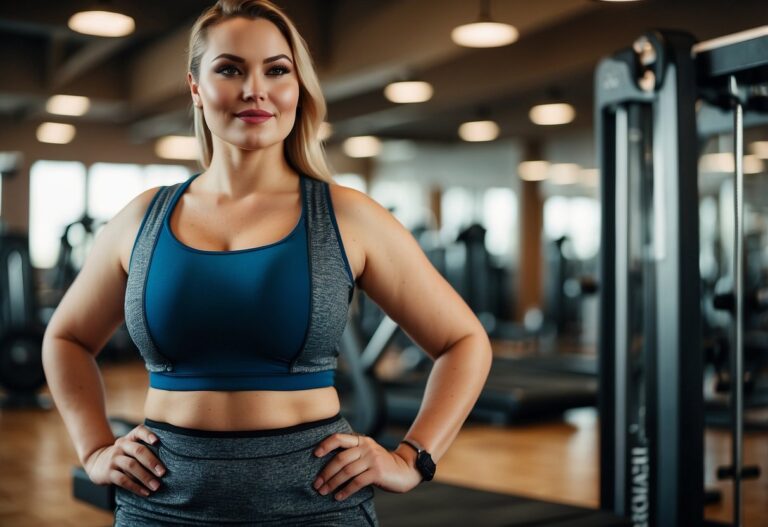Getting into shape doesn’t have to mean spending hours at the gym or targeting one muscle group at a time. Full body workouts are a great way to efficiently use your exercise time and can bring a host of benefits. Whether you’re a beginner looking to start a new fitness journey or an experienced athlete aiming to maximise your efforts, incorporating full body routines can be a game changer.

What makes full body workouts so effective? They engage multiple muscle groups in a single session, burning more calories and improving overall strength and endurance. You’ll find a variety of exercises that can be tailored to meet your specific goals, whether you’re looking to build muscle, lose weight, or simply stay active.
Start with Compound Exercises
When beginning a full body workout, compound exercises are a great place to start. These exercises work multiple muscle groups at once, making your training more efficient.
For example, the squat targets your quads, glutes, and core. Adding exercises like the bench press and deadlift will help build strength in your upper body and back.
Using compound exercises can save you time and give better results. Think about incorporating movements like the push-up and shoulder press for a balanced workout.
Remember, form is key. Always ensure you are performing exercises correctly to avoid injury and to get the most out of your workout. Check your form regularly.
Incorporate Free Weights
When looking to enhance your full-body workouts, using free weights can be a game changer. Free weights, such as dumbbells and barbells, help target multiple muscle groups.
Consider starting with compound exercises. These movements engage several muscle groups at once. Think about squats, deadlifts, and bench presses. They can help build strength and muscle mass efficiently.
Another effective method is to split your workouts into upper and lower body sessions. This approach ensures that you are giving adequate attention to all major muscle groups.
Adding free weight exercises like weighted pull-ups or single-arm rows can also diversify your routine. These exercises can provide unique benefits that machines or bodyweight workouts might not offer.
Remember to focus on your form. Proper technique is crucial to prevent injuries and ensure you are getting the most out of your exercises.
If you’re just beginning, start with lighter weights and gradually increase as you become more comfortable. Looking for advice? Check out these free weight exercises for a structured approach.
Use proper form

Using proper form is key to any workout. When you lift weights or perform exercises, your goal should be to do it safely and effectively.
Imagine holding a barbell across your back while doing lunges. It’s important to keep your chest up and core engaged. This helps you avoid injuries.
Another great tip is to breathe correctly. Breathe out as you lift and breathe in as you lower the weight. This makes the exercise feel smoother and helps you perform better.
Focus on balance. Work all major muscle groups, and strengthen opposing muscles, like the fronts and backs of your arms. This helps you build a balanced and strong body. Following these tips will lead to effective and safe workouts.
Vary your routine
To keep your workouts effective and exciting, it’s important to mix things up. Doing the same exercises every time can lead to boredom and plateaus.
One way to vary your routine is to switch up your exercises. For instance, if you usually do squats, try lunges or step-ups instead. This keeps your muscles guessing and can help you avoid injury.
Changing the intensity of your workouts can also be beneficial. Some days, go heavy with weights and fewer reps, while on other days, use lighter weights and more reps. This variety can help in boosting strength and endurance.
You might also want to try different workout formats. For example, if you normally do circuit training, consider giving HIIT (High-Intensity Interval Training) or supersets a go. Each format challenges your body in unique ways and helps in overall development.
Don’t forget about incorporating different equipment too. Instead of always using dumbbells, mix in resistance bands, kettlebells, or even bodyweight exercises. This can help in working out different muscle groups and keeping your sessions fresh.
Adding variety isn’t just about physical benefits; it can make your workouts more enjoyable. Keeping things interesting can help you stay motivated and consistent, which is key to long-term success. So, the next time you plan your workout, think about what new elements you can incorporate to keep challenging yourself.
Focus on your core
Your core is the foundation of almost every movement your body makes. Strengthening it can improve your posture and balance and help prevent injuries.
Planks are a great start. Hold a plank position for 30-60 seconds. They engage multiple core muscles without requiring any equipment.
Another effective exercise is the Russian twist. Sit on the floor with your knees bent, lean back slightly, and twist your torso from side to side while holding a weight.
Hinging at the hips during exercises like deadlifts and kettlebell swings can also build core strength by focusing on a neutral spine.
Include Cardiovascular Exercises
Adding cardiovascular exercises to your full body workout can boost your heart health and improve endurance. It’s also a great way to burn extra calories.
Incline walking is a fantastic choice. It’s gentle on the joints but still elevates your heart rate. Just set your treadmill to an incline and walk at a steady pace. Discover more about incline walking.
If you’re working out at home, try exercises like jump lunges. They combine muscle work with cardio. Jump high, switch legs in the air, and land softly. It’s effective and doesn’t require any equipment. Learn about other effective at-home cardio.
Cardiovascular Exercises
Take rest days
Taking rest days is essential for your full-body workout routine. Your muscles need time to repair, rebuild, and strengthen. Without rest, you risk overtraining and injury.
Rest days aren’t just about doing nothing. You can engage in active recovery activities like yoga, walking, or foam rolling, which promote blood flow and help with muscle recovery.
Incorporating rest days lets you maintain a balanced life. It helps you achieve better results in your fitness goals, while also balancing your commitments at home and work.
Remember, even elite athletes take rest days. Your body needs it to stay healthy and perform well in workouts.
Stay Hydrated
Staying hydrated is crucial during your workouts. When you exercise, your body loses fluids through sweat. To keep your performance up, make sure you drink enough water before, during, and after your workout.
Before you start, try to drink 16 to 24 ounces of water about two hours before you hit the gym.
During your workout, take small sips of water every 15 minutes. This helps to keep your hydration levels balanced. You could use a hydration pack or keep a water bottle handy for ease.
After your workout, rehydrate with at least 16 to 32 ounces of water. Pair salty snacks like pretzels or salted nuts with water to help your body retain the fluids you drink.
Simple steps like these can make a big difference in how you feel during your workouts. Remember to listen to your body, and drink when you’re thirsty.
Track your progress

Tracking your progress is key to staying motivated and seeing improvements in your full body workouts.
One easy way to track how you’re doing is by taking progress photos. Snap pictures of yourself regularly and compare them over time. These visuals can be a powerful motivation booster.
Consider using a fitness tracker. These devices can monitor your activity levels, heart rate, and calories burned. Seeing the numbers go up can help you stay on track.
Pay attention to your clothing. Notice if your clothes fit differently as you work out more. This can be a subtle yet rewarding sign of progress.
Another effective method is taking body measurements. Use a tape measure to track changes in your chest, waist, and biceps. This can show you how specific areas of your body are changing.
Keep a workout journal. Write down your workouts, including the exercises, sets, reps, and weights used. This helps you see strength gains and adjust your routine as needed.
Using these simple methods, you can stay motivated and see how far you’ve come in your fitness journey.
Warm up before workouts
Warming up before a workout is vital to prepare your body and mind. It helps you avoid injuries and gets your muscles ready for action.
Bodyweight squats are great for activating your glutes, quads, and hamstrings. This exercise is especially useful if you plan to do loaded squats.
Another effective move is the high-plank walkout, which engages your core and shoulders. Stand tall, bend forward, place your hands on the floor, and walk them out to a plank position. This exercise boosts your overall stability.
Lunges are also fantastic for warming up. Step forward, bend your knees, and keep your upper body straight. Lunges target your legs and core muscles, getting them ready for more intense exercises.
Consider incorporating these exercises into your routine to help boost your workout performance. You can find more details about these moves at Mindbodygreen, Verywell Fit, and Nerd Fitness.
Benefits of Full Body Workouts
Full body workouts offer several advantages, including improved muscle balance and enhanced caloric burn. These benefits contribute to overall fitness and more efficient exercise routines.
Improved Muscle Balance
Full body workouts target multiple muscle groups in one session. This approach helps develop a balanced physique. Instead of focusing on just one area, such as arms or legs, you work out your entire body. This is especially useful for those looking to avoid muscular imbalances which can lead to injury.
Working different muscles together improves coordination. For instance, exercises like squats and deadlifts engage both lower and upper body muscles. Engaging various muscle groups fosters a more functional strength, useful in daily activities and sports. Establishing this balance can also prevent overuse injuries common in specialised routines.
Enhanced Caloric Burn
Full body workouts are efficient in burning calories. Since you activate more muscle groups, your body expends more energy. This makes these workouts excellent for weight loss or maintenance. For example, exercises like burpees and push-ups engage numerous muscles, leading to higher caloric expenditure compared to isolated exercises.
Additionally, the increased effort boosts your heart rate. Exercises that alternate between various muscle groups keep your cardiovascular system engaged. This results in a more effective workout, both strengthening your heart and improving metabolic rate. High-intensity interval training (HIIT) with full body movements also maximises caloric burn in shorter time spans.
These benefits make full body workouts a practical choice for those short on time but looking for effective results.
Key Components of Effective Full Body Workouts
A great full body workout combines the right exercises and balances strength with cardiovascular fitness. These key components make your workouts more effective and efficient.
Incorporating Compound Movements
Using compound movements in your workout is crucial. These exercises work multiple muscle groups at once, which helps you build overall strength and burn more calories. Examples include squats, deadlifts, and bench presses.
When you do squats, you engage your legs, back, and core. Similarly, deadlifts not only target your hamstrings but also your lower back and forearms. Bench presses work your chest, shoulders, and triceps. By combining these exercises, you get a comprehensive workout in less time.
Using compound movements is also practical. You can perform these exercises at home with minimal equipment. For instance, bodyweight squats and push-ups are excellent starting points if you don’t have dumbbells or barbells. If you can commit to these types of exercises, you will see improvements in your strength and endurance.
Balancing Strength and Cardio
A balanced approach between strength training and cardio is essential. Strength training builds muscle and supports metabolic health. Cardio improves your heart health and aids in fat loss. Integrating both provides a well-rounded fitness routine.
Aim for a mix of activities like weight lifting and running or cycling. For instance, you might do strength training on Mondays, Wednesdays, and Fridays, and cardio on Tuesdays and Thursdays. This schedule ensures you’re not neglecting either aspect of fitness.
Combining both also breaks monotony. If you’re short on time, consider doing a full-body workout that includes bursts of cardio between strength sets. This method increases your heart rate and boosts calorie burn. Balancing strength and cardio keeps your workouts diverse and your body guessing, helping you avoid plateaus.







